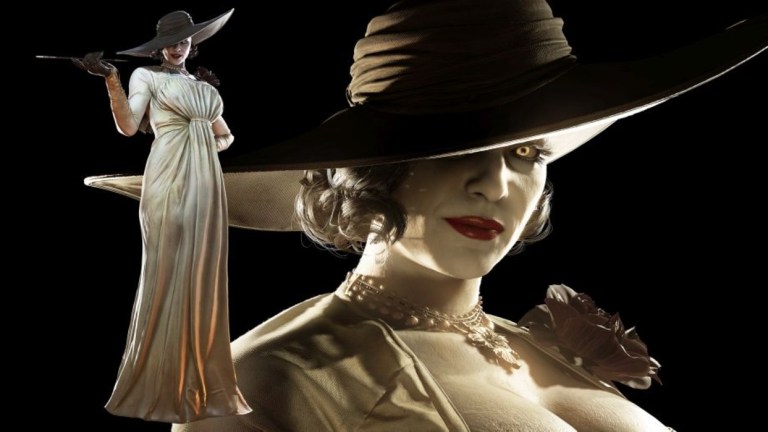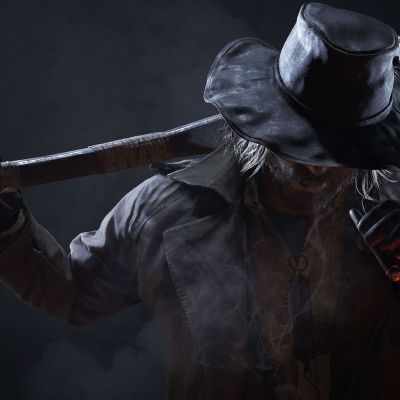Resident Evil Village: Lady Dimitrescu and the Real Serial Killer Who Inspired Her
Lady Dimitrescu might only haunt the halls of her fictional castle in Resident Evil Village but her character was inspired by a real-life Hungarian serial killer named Elizabeth Bathory.

Resident Evil Village, Capcom’s newest vision of horror, unleashed its villain, Lady Alcina Dimitrescu, onto the world in January, and the internet has hardly been the same since. Before we’d even seen anything substantial from the new game, the nine-foot “Tall Vampire Lady” was already the sequel’s most popular character, the subject of countless memes and even a few…salacious mods and videos.
With the release of the game this month, Dimitrescu’s star is shining even brighter. We just can’t stop talking about our Lady. And when you hear who the developers at Capcom turned to for inspiration when creating this character, you get the sense that she was always destined for infamy, designed specifically to go viral.
One major influence, according art director Tomonori Takano, was the Japanese internet urban legend Hasshaku-sama (or “hachishakusama”), an eight-foot-tall evil spirit in a wide-brimmed hat who lures her young male victims to her by imitating the voices of their loved ones. Impossibly tall, pale as a corpse, and wearing a wide-brimmed hat, the resemblance is uncanny.
But it’s Dimitrescu’s more gruesome, real-life inspiration that will likely keep you up at night. To create a bloodthirsty lady of a castle with a taste for torturing and mutilating her victims, Capcom needed only to look to Hungarian noblewoman and convicted serial killer Countess Elizabeth Bathory. One of the most wicked figures of 16th-century Europe, Bathory is said to have tortured and killed up to 650 girls and women between 1590 and 1610, although the final tally of victims is disputed to this day.
Even centuries after her heinous crimes, there’s still much we don’t truly know for sure about Bathory and her long-rumored vampiric tendencies. It’s impossible at times to tell what is a true account and what is tall tale. The story we know today is likely a mix of both. Did she bathe in the blood of young virgin girls to retain her youth? Did her cruelty stem from the supposed Satanic rituals and witchcraft she witnessed from a young age in her family home in Transylvania? Was she really in the middle of torturing her latest victim, drenched in blood, when she was finally detained by the King of Hungary’s lead investigator, Gyorgy Thurzo?
By the time she was arrested and sentenced to life in house arrest inside Csejte Castle, her house of horrors in Upper Hungary (now modern Slovakia), Thurzo is said to have collected 300 statements from witnesses who attested to the brutal killings of young peasant girls abducted by the Countess, as well as confessions from servants (although they were being tortured by the authorities at the time). Few witnesses could actually give first-hand accounts of Bathory’s crimes, and many of the testimonies amounted to little more than hearsay, but Thurzo’s investigation and the eyewitness accounts of two court officials who claimed to have watched the Countess kill several girls were enough to lock her inside a room in her castle until her death in 1614.
The crimes recounted at the trial, in the history books, and in the folktales grow more and more gruesome the deeper you dig, like descending down to the darkest depths of Lady Dimitrescu’s castle.
“Bathory’s torture included jamming pins and needles under the fingernails of her servant girls, and tying them down, smearing them with honey, and leaving them to be attacked by bees and ants,” writes History.com. “She often bit chunks of flesh from her victims, and one unfortunate girl was even forced to cook and eat her own flesh.”
While some historians and scholars claim that Bathory was actually the innocent victim of a conspiracy propagated by the Catholic Church and a rival family trying to rob her of her extensive wealth and land, the Countess’ dark legacy as an alleged bloodthirsty cannibal is what has solidified her place in history and turned her into an influential figure in horror fiction. In fact, debates have persisted over the years regarding whether the “Blood Countess” helped inspire Bram Stoker’s Dracula. Although fellow Transylvanian Vlad the Impaler is largely accepted as the foremost historical source for the seminal vampire novel, Bathory is sometimes referred to as “Countess Dracula.”
In 1971, Hammer Films loosely adapted Bathory’s story in Countess Dracula, which follows noblewoman Elisabeth Nádasdy who, yes, bathes in blood in order to retain her youth. The 2008 historial drama Bathory casts a more sympathetic eye, portraying the Countess as the victim of manipulation.
According to Takano, while Bathory provided the foundation for Lady Dimitrescu’s story, the character evolved from other ideas floating around Capcom.
“The concept started out as a castle with a hundred witches inside, but that was hard to implement into a video game format, which is why we ended up making it like this,” Takano told IGN. “But actually, when you play the game you might notice that the setting is still pretty close to that idea. All the enemy types inside the castle are female. With Lady Dimitrescu as the cult’s guru, we have created this hierarchy of women. Men have their blood drained by these women, so you could say it’s the opposite of Dracula.”
Indeed, Lady Dimitrescu isn’t a 1:1 recreation of Bathory, but the similarities are there in gruesome detail. Like the Countess, Dimitrescu is the matriarch of a castle, complete with a dungeon where she murders and bleeds her victims (it is said Bathory also had her husband build her a torture chamber as a gift before his death). Due to her unique mutation, Dimitrescu must drink the blood of her victims in order to retain her youth and her powers. She also has three “daughters” who help her hunt down her prey, not unlike the four servants (including a local witch) who were charged as Bathory’s accomplices and executed.
Much more will be said about Resident Evil‘s newest villain in the days to come. Does Lady Dimitrescu live up to the month’s of social media hype? That’s up to each player to decide. But when it comes to the woman who inspired her and what’s fact or fiction about her life, the truth is likely somewhere in the middle.


